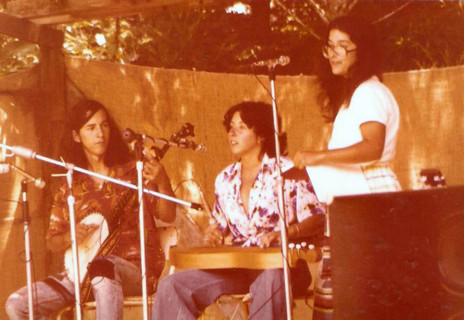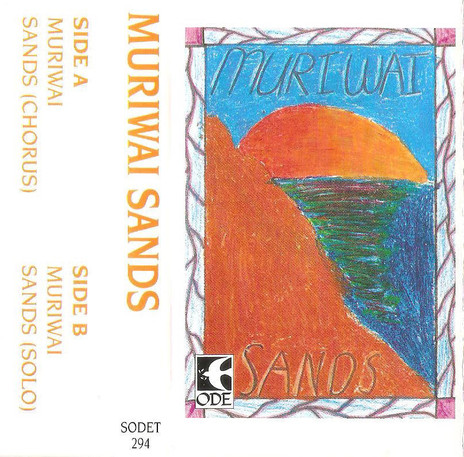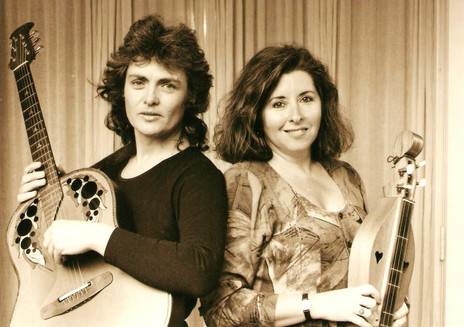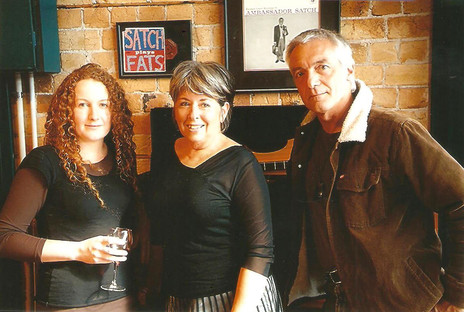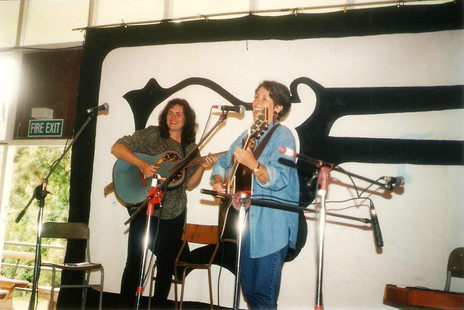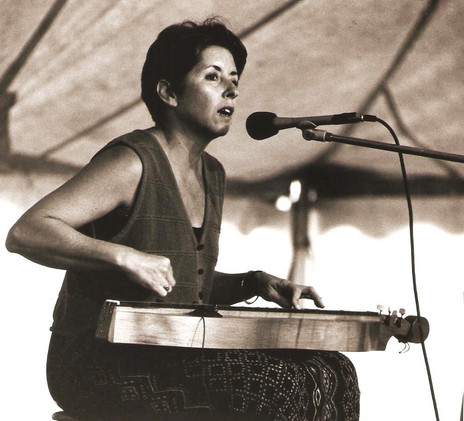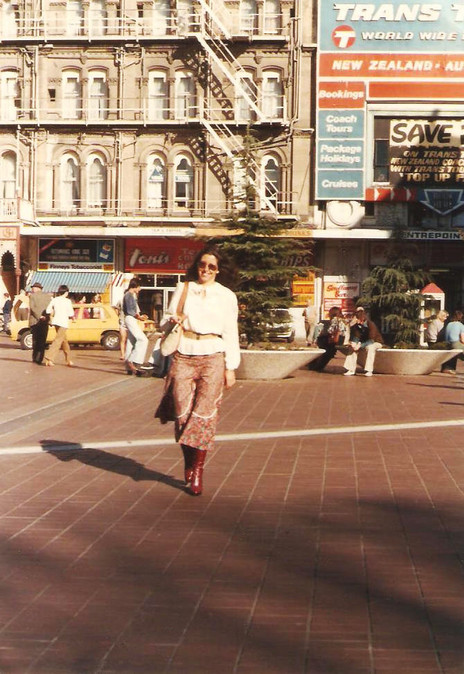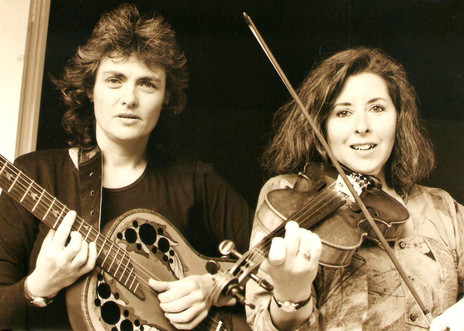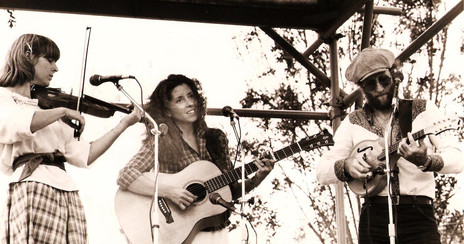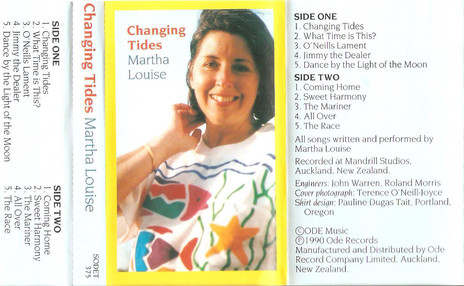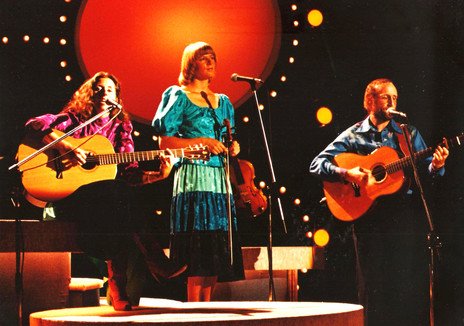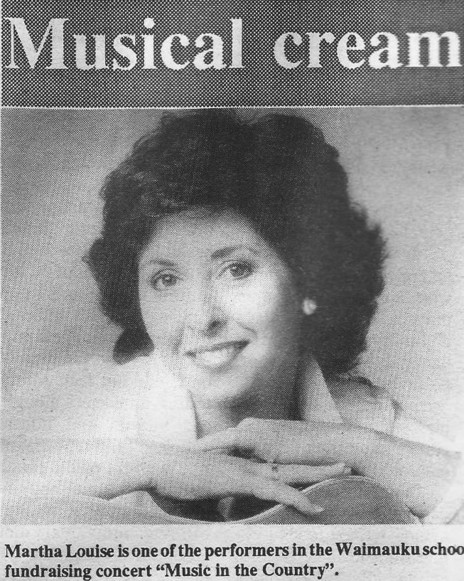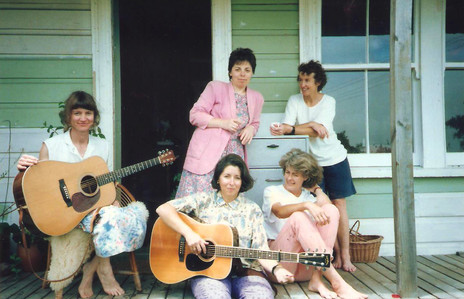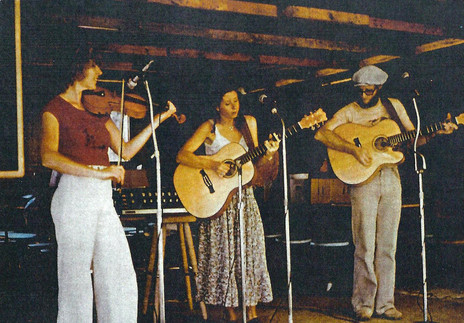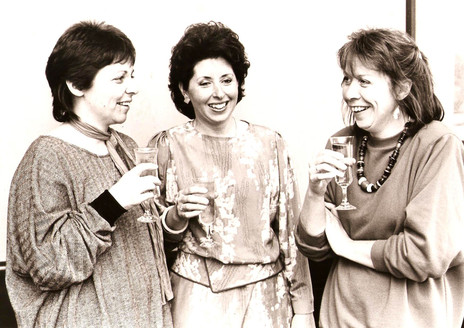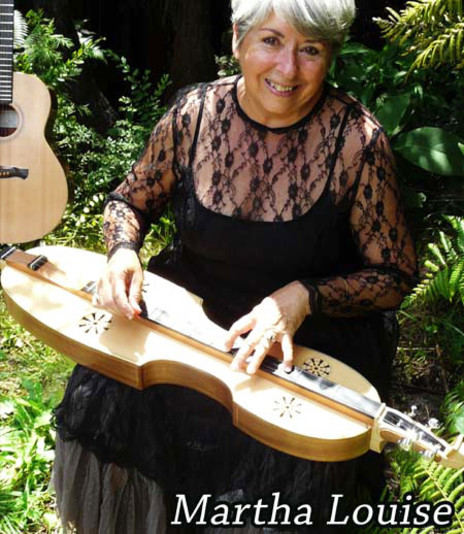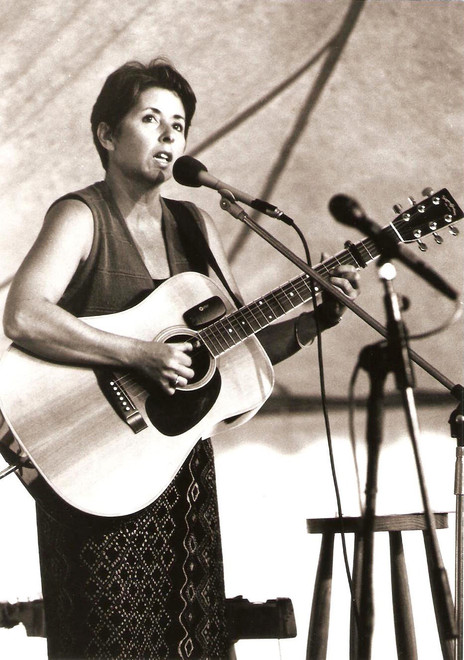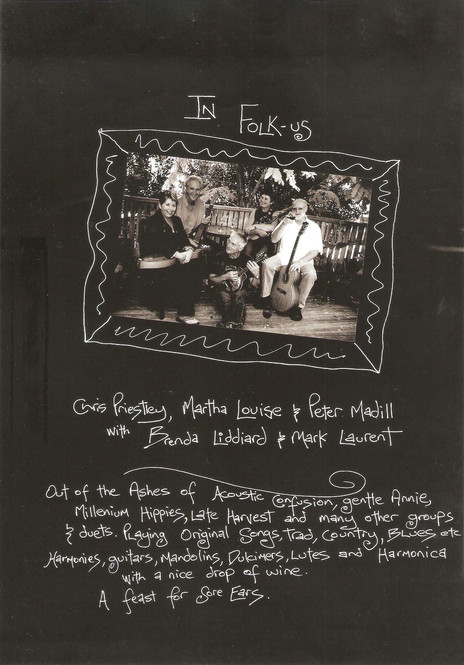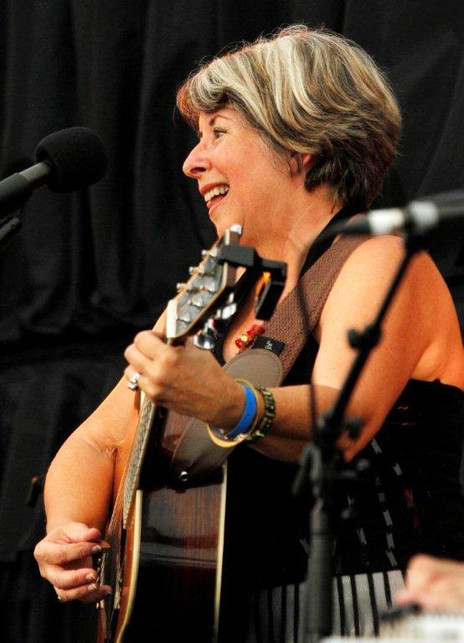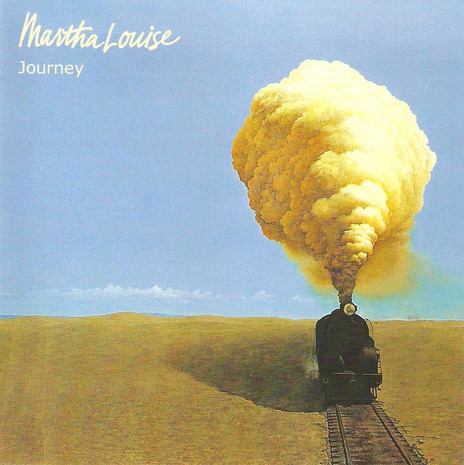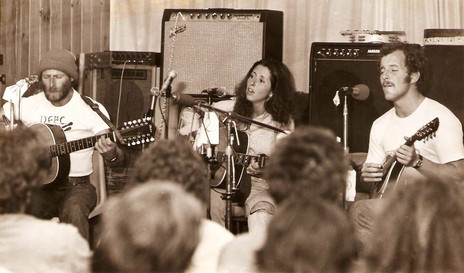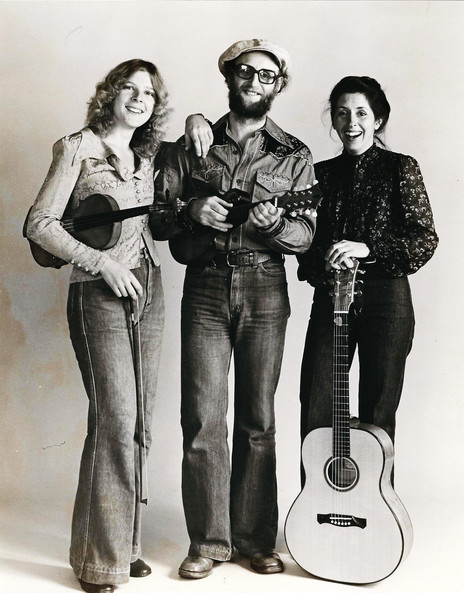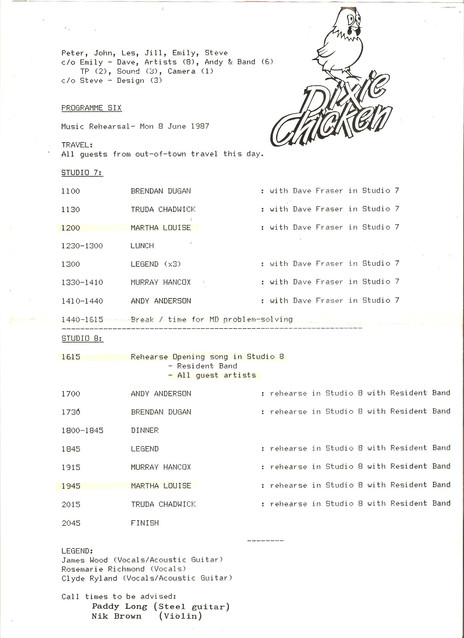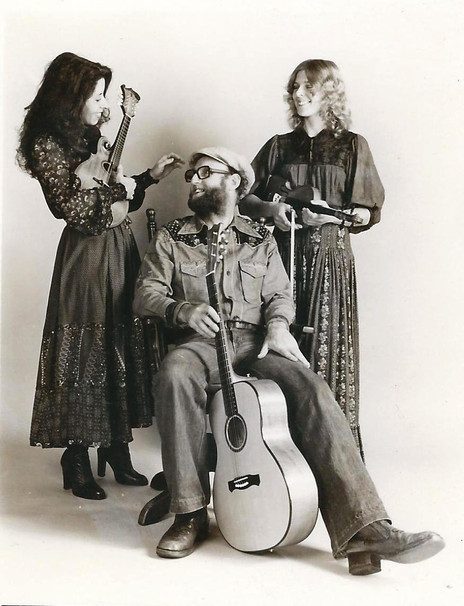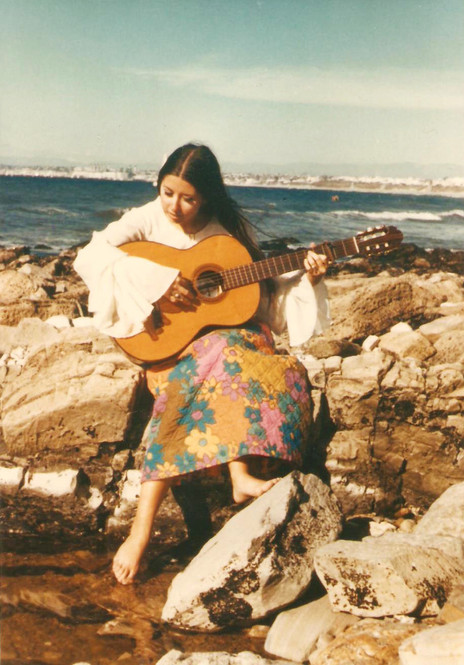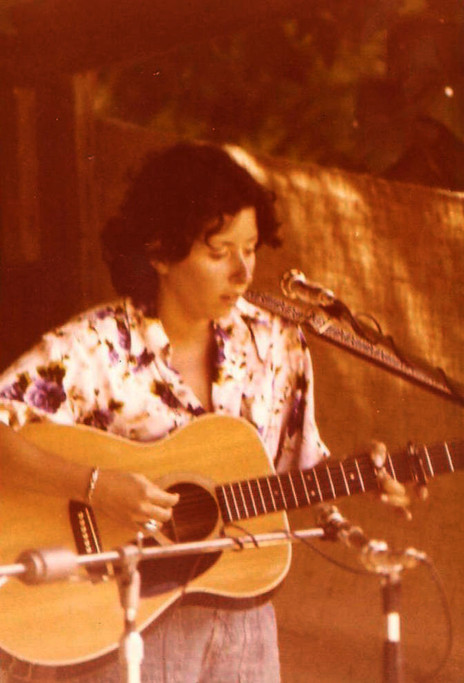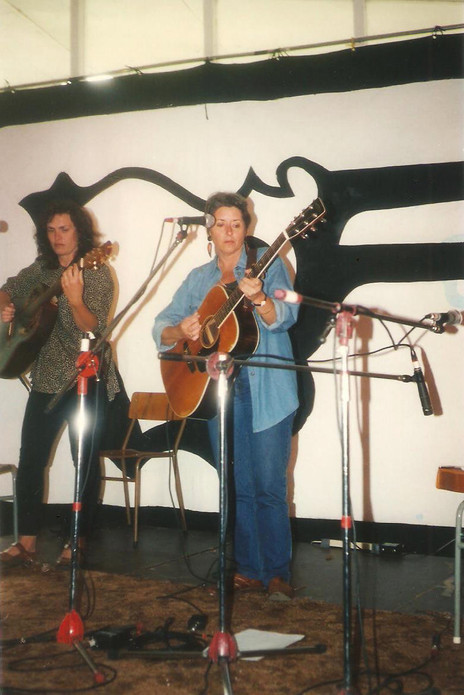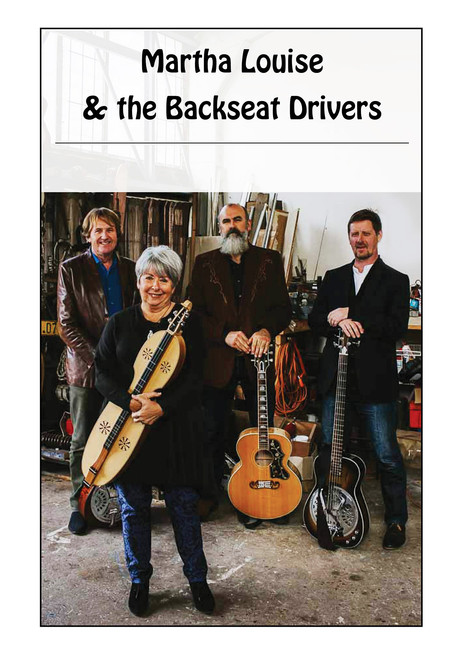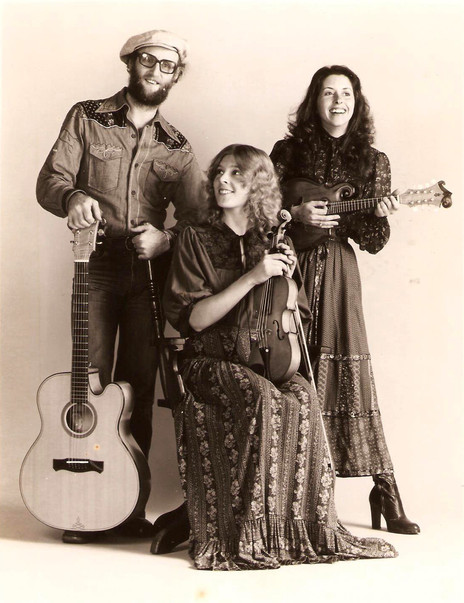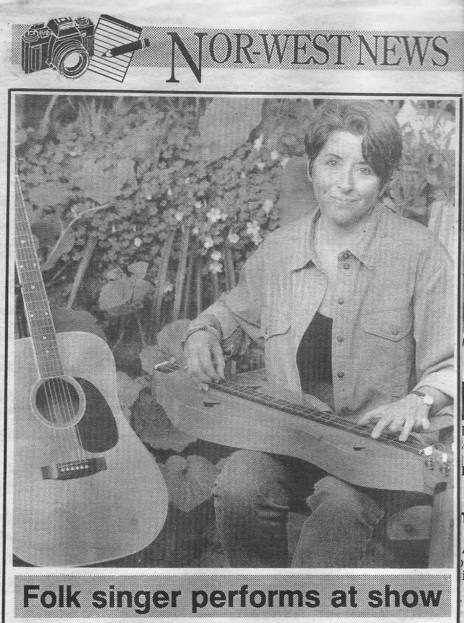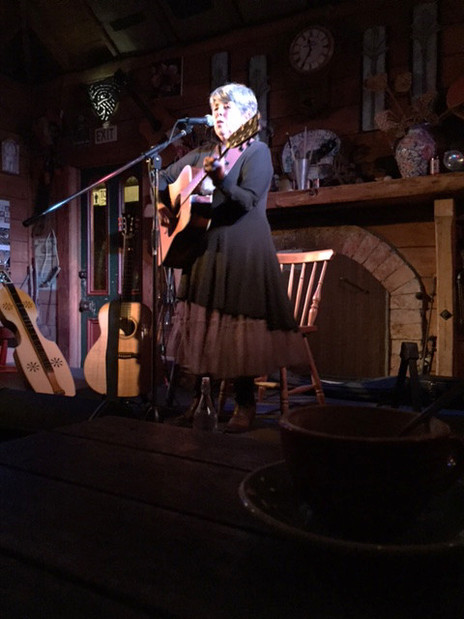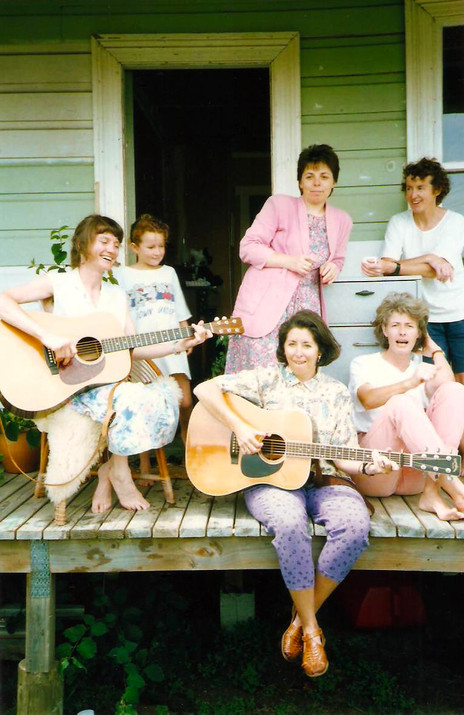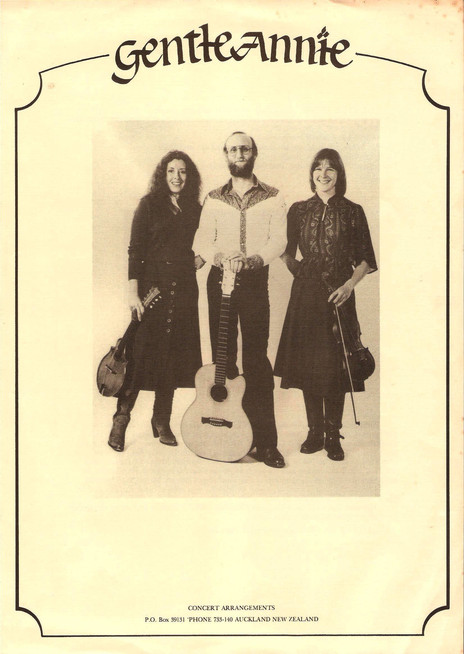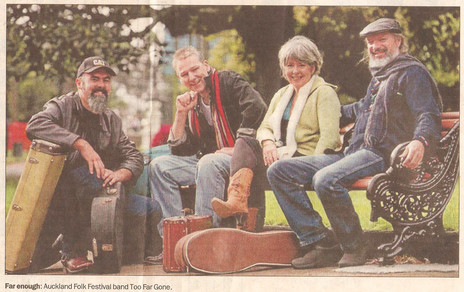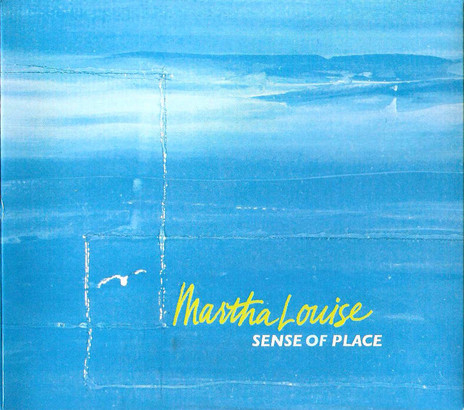Spurred on by a visit to the Canterbury Folk Festival in 1975 where she made lifelong friends and sang James Taylor songs till dawn, Martha has barely sat still since. “I was transported into a life that connected me back to my music,” she said. “It changed many things.”
A multi-instrumentalist accomplished on guitar, fiddle and dulcimer, Martha has released three solo albums, a compilation album and one with her early 1980s trio Gentle Annie. She has played all manner of gigs up and down the country, either solo or in various combinations, and shows no signs of slowing down.
“It’s been steady,” she says. “Way leads on to way. And being in Auckland surrounded by my best friends who are also awesome musicians, one group morphed into another. It’s just such a special part of my life. And I am amazed: my God, I’m still doing it!”
Martha Louise was born into a musical family in Ann Arbor, Michigan, on 21 April 1949. Her father, Thomas E Wilson, was a high-school music teacher and church choir director who played the trumpet and conducted orchestral, choral and light opera music. Her mother, Ellen Louise Wilson, was an art teacher and choral director who sang. Uncle Fred Fisher and four cousins played guitar and harmonised on what her mother disparagingly referred to as “that hillbilly music”.
After a year’s piano study, Martha took up classical violin and began singing in her mother’s church choir. The family moved from Lafayette, Indiana, to Redondo Beach in California, where she swapped the violin for guitar at the age of 13 and took lessons in classical, flamenco and folk. She caught the performing bug after featuring in Redondo Union High School variety concerts.
1967 to 1969 were spent at the Los Angeles Tech studying a Fashion Design Associate of Arts Degree. In 1969, she performed Joan Baez and Judy Collins covers at an open mic night in a Hollywood coffee house.
“When I took up the guitar and started wanting to sing, it was Joan Baez songs, Bob Dylan, people telling stories. I was more into that than the rock sort of scene,” Martha recalled. “But I then got into Linda Ronstadt, The Stone Poneys, Crosby, Stills & Nash, everybody that was doing harmony. Buffalo Springfield was one of my favourite, sort of more rocky bands.”
She married the friend of a high school friend in 1969 and the newlyweds settled in Manhattan Beach. Martha found work in a fashion house in Hermosa Beach, and her guitar languished in its case against a wall. Their crowd were more about playing Doobie Brothers records and dancing than creating their own music.
In the wake of the Watergate scandal, the ongoing Vietnam War and a spate of burglaries in their own community, Martha and her husband decided to get out. “We had one couple we knew – he was an art teacher – and they emigrated to New Zealand. It was really on the strength of their grainy photographs of sheep all over the road, beautiful beaches, and we thought, ‘Oh, let’s just give it a go.’ So we actually sold the house, sold the cars, sold the furniture and emigrated to New Zealand.”
IN 1975 Martha received a phone call from her musician brother telling her to come to the Christchurch folk festival.
They arrived in September 1973 and travelled from Cape Reinga to Invercargill in a van. They spent the following winter skiing in Queenstown where Martha won second prize in a Travel Lodge Hotel talent quest, coming away with $50 and a bottle of Coruba.
By 1975 they settled in Nelson, where they received a phone call from Martha’s musician brother telling them to come to Christchurch and check out the upcoming folk festival. “That was the point where not only were people making their own music, but they were writing as well,” Martha said. “It was a who’s who of the folk scene and a chance to meet them and see what they did. It was huge.”
The festival brought to her attention the music of singer-songwriter Paul Metsers, brothers Phil and Mike Garland and their Canterbury Crutchings Bush Band, and The Bluegrass Expedition with their banjo, dobro and mandolin. “I didn’t know anybody [in New Zealand] knew what bluegrass was! They were so good. And that was my first inkling that country music in New Zealand meant a lot of different things.” What she had experienced of the local folk scene was a far cry from the Gram Parsons and Emmylou Harris records she’d recently been introduced to by a Canadian neighbour in the Maitai Valley.
When her marriage ended, Martha headed north to Auckland, where she flatted on the North Shore, performing at the Devonport Folk Club near her home, the Titirangi Folk Club and the Poles Apart in Newmarket.
It was at the latter where she met luthier and guitarist Peter Madill. Martha would turn up at the club with a new song to perform only to be beaten to the punch by Madill and his duo partner Cath Woodman. Soon they were joining forces in different combinations and with fiddle player Cath Newhook, Madill’s wife-to-be. Seeing others performing their own material inspired Martha to start writing.
In 1978 she appeared on the television talent quest Opportunity Knocks in Christchurch and was offered a recording contract by Music World label owner Hoghton Hughes. She turned him down because she didn’t feel his idea of country music and hers were compatible. The following year she appeared on South Pacific Television’s The Club Show and Telethon.
At the close of the decade she met Nashville singer-songwriter Doug Eckert, who was travelling the world, and they became an item. Martha sang backing vocals on Eckert’s 1980 Ode Records album Our Lives Fit Together. She also organised a concert at the Auckland Grammar School hall for visiting Alaskan band Banish Misfortune and Madill’s Stringed Instrument Co.
That concert resulted in an invitation for Stringed Instrument Co to visit Alaska. But when singer Cath Woodman was unavailable, Madill and Cath Newhook recruited Martha Louise and the trio christened themselves Gentle Annie. They took off that northern summer and spent six weeks touring Alaska. At its conclusion, Martha stayed in Portland, Oregon, where Eckert eventually joined her.
“I had to make a tough call to come back to New Zealand or lose my permanent resident status,” she said. “Leaving Portland to come back to New Zealand meant leaving him as well, which was really not that easy.”
Within days of her return to Auckland, Gentle Annie ventured to the New Zealand Country Music Star Awards in Tauranga in October 1981, where they were awarded best group, Martha and Peter Madill best duo, and Martha best female and best overall. Soon the trio were added to the TVNZ music show That’s Country as backing vocalists for the regular local artists and weekly international stars.
Ode Records boss Terence O’Neill-Joyce had been interested in recording Martha Louise since the Doug Eckert sessions and when he heard of the impending television exposure for Gentle Annie he put the trio into Mandrill Studios and produced their self-titled LP.
Martha was particularly proud of their version of Don Williams’s ‘Lay Down Beside Me’. But while driving home from the studio – having completed the final mix – they heard Patsy Riggir’s newly released cover of the song on the radio.
“Oh, man, I was devastated,” Martha recalled. “Lucky I wasn’t driving the car. It was just you pour your heart into it in the studio and then, ‘What?’” ‘Lay Down Beside Me’ would be Riggir’s highest charting single, reaching No.3.
Martha continued in the folk scene and by 1985 had a collection of songs worthy of committing to tape.
Not long after the album was released in mid-1982, Martha Louise left Gentle Annie when she moved away from their creative hub at the Brown’s Mill building in Durham Lane, to Muriwai Beach. She and Terence O’Neill-Joyce were married and in 1983 their daughter Jennifer was born.
Martha continued in the folk scene and by 1985 had a collection of songs worthy of committing to tape. O’Neill-Joyce brought together some of the country’s top musicians, including Martin Winch (guitar), Frank Gibson Jr (drums), Stuart Pearce (piano), Brendan Power (harmonica), Brian Smith (saxophone) and Nik Brown (fiddle) for sessions at Mandrill Studios. The Terrace Strings added strings to Martha’s own ‘The Sailor’ and Hank Williams’s ‘I’m So Lonesome I Could Cry’ at Marmalade in Wellington. The album Mixed Feelings was a finalist for New Zealand folk album of the year.
The second half of the 1980s saw continued solo work as well as collaborations with Auckland singers Cath Woodman and Bev Young, who both sang backing vocals on Mixed Feelings, everywhere from Malvern to Wellington to Hamilton. At the Wellington Folk Festival – after five or six encores for former Red Hot Peppers multi-instrumentalists Robbie Lavën and Marion Arts – the women took the stage with just Martha’s dulcimer. “Perhaps I can dazzle you with my simplicity,” she told the audience.
On her 1990 cassette-only release Changing Tides, again recorded at Mandrill, Martha wrote all 10 songs and played all the instruments. Named for the song she had entered in the Music For New Zealand competition for the 1990 celebrations, the album was recorded primarily to take to two family reunions in the United States.
The following year, she sang backing vocals on John Grenell’s Windstar – Aotearoa album and duetted with him on her own ‘Dance By The Light Of The Moon’. Grenell returned the favour singing on Martha’s anti-mining song ‘Muriwai Sand’ alongside members of the Muriwai community, Waimauku School pupils and folkie friends.
In the 1990s, Martha worked in a duo with Marion Arts and formed The Broccoli Sisters with Cath Woodman (vocals), Sonja Giles (banjo/vocals), Sue Hill (guitar/whistle/vocals) and Jenny Christianson (guitar/vocals). She studied interior design for two years and worked in the rag trade and bridal design from her home studio.
A compilation of her 1985 LP Mixed Feelings and 1990’s cassette-only Changing Tides was released on CD in 2000 as Sense Of Place. The following year, she was reunited with her former Gentle Annie cohort Peter Madill in the trio Late Harvest, which also included Sue Hill.
In 2006 and 2007 she recorded the album Journey at Robbie Duncan’s Braeburn Studios in Wellington. With sessions regularly interrupted by the Hutt Valley to Wellington trains, the studio and Duncan’s sympathetic ears were sought out by most Kiwi folkies worth their salt at the time. The album featured six of her own songs and others by Rosanne Cash, Gillian Welch and Shawn Colvin, and backing by the likes of Peter Madill, Mark Laurent, Chris Priestley, George Barris and Nigel Gavin.
Since then she has formed and/or worked in bands such as Too Far Gone, Unsung Heroes and Martha and The Backseat Drivers. The current line-up of the latter also includes singer-songwriter Paul Symons on guitar and vocals, Stuart Grimshaw on bass and television director and producer Cam Bennett on dobro and harmony vocals.
--
Martha Louise passed away on 20 June 2022, from cancer.
